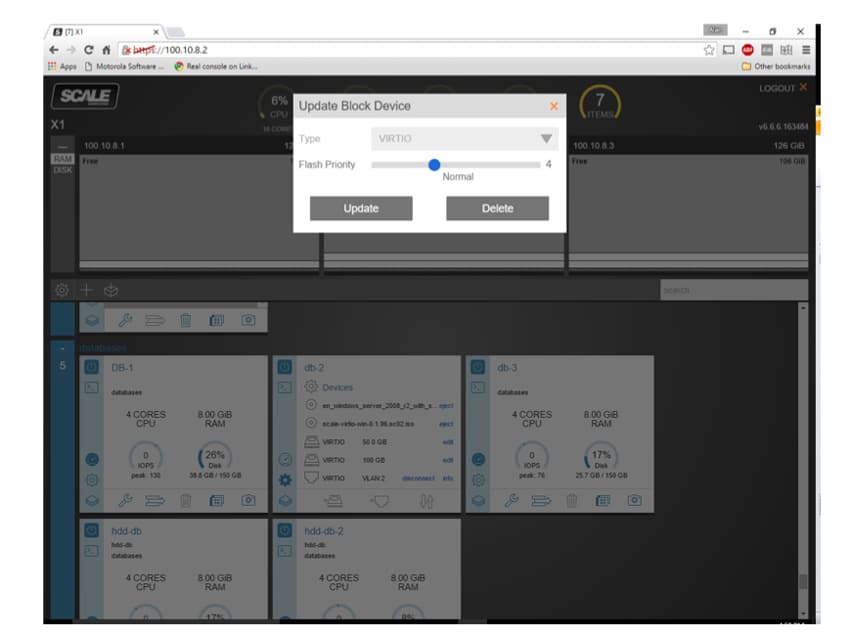Earlier this week Scale Computing announced that it was adding flash-enabled automated storage tiering into its HC3 platform. This update adds hybrid storage including SSD and spinning disk with HyperCore Enhanced Automated Tiering (HEAT). The update will also allow users to tune performance on different workloads to make sure that they are getting the performance that they need or are not being overprovisioned hurting performance elsewhere.
Earlier this week Scale Computing announced that it was adding flash-enabled automated storage tiering into its HC3 platform. This update adds hybrid storage including SSD and spinning disk with HyperCore Enhanced Automated Tiering (HEAT). The update will also allow users to tune performance on different workloads to make sure that they are getting the performance that they need or are not being overprovisioned hurting performance elsewhere.
Scale Computing states that their HC3 platform brings storage, servers, virtualization, and high availability together in a single, comprehensive system, the biggest benefits being no virtualization software to license and no external storage to buy. These benefits mean lower out-of-pocket costs and simple architecture with Scale’s HC3 HyperCore. Scale Computing states that their HEAT technology is a combination of built-in intelligence, data access patterns, and workload priority to automatically optimize data across disparate storage tiers within the cluster.
The most recent updates means HC3 Hypercore will be combining HEAT technology with SSD-hybrid nodes in order to add a new tier of flash storage to either new or existing HC3 clusters. This tier isn’t just for caching either, it is flash capacity that will add performance to the entire storage pool. According to Scale, HEAT will take this new tier of flash storage and automatically tune parameters for utilization on a per virtual disk basis for optimal performance. When added to existing clusters, workloads will be able to automatically utilize the new storage tier.
Along with this Scale Computing is adding an easy-to-use slide bar to give administrators the option to tune their flash to a specific need within a VM or for a given workload. Scale's reason behind the optional tuning is that all workloads are different and need different performance. Some workloads need 100% flash while other need 0. Scale believes that this tuning combined with intelligent I/O mapping, will have an overall positive impact on the flash storage in the HC3 cluster. Of course this leads one to speculate why the whole processes isn’t automated taking any human error element out of it.
Scale Computing is deploying its HEAT technology across its entire HC3 line, specifically introducing a flash tier to its HC2150 and HC4150 appliances. As far as the drives being used go, Scale is using 4- or 8-drive units with one 400 or 800GB SSD with three NL-SAS HDD in 1-6TB capacities and memory up to 256GB, or two 400 or 800GB SSD with 6 NL-SAS HDD in 1-2TB capacities and up to 512 GB memory respectively. Scale is using two 10GbE SFP+ ports per node for network connectivity.
Availability
The Scale Computing HC3 platforms with HEAT technology are available now.
Sign up for the StorageReview newsletter

